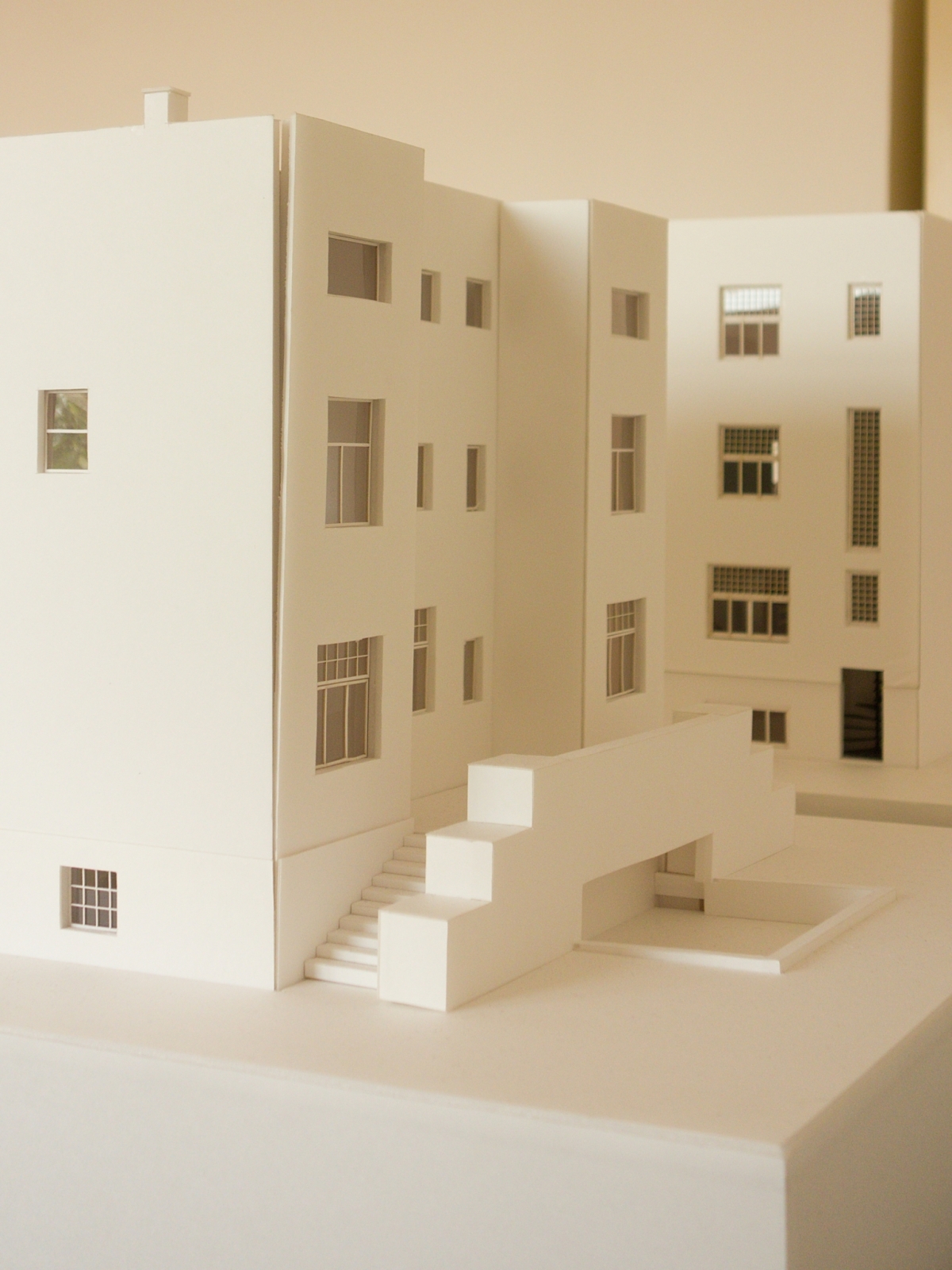

The stucco façades have another benefit: they create a smooth, unornamented, and white surface. Loos did not want to use the stucco as a cheap imitation rock and condemned that practice in general he used stucco for its functionality.
STEINER HOUSE ADOLF LOOS SKIN
Loos built his buildings with roughcast walls and used the stucco to form a protective skin over the bricks. The Steiner house has a stucco façade like most of his other buildings but not without reason. This was the style for which Loos strove: a refined and intricate interior with and simple and nonthreatening exterior. In the Steiner house, the living area is raised slightly above the ground level and separated from more private areas of the house such as bedrooms and painting studio, which was located on the first floor. The served space in this house is neatly separated from the serving space by placing the serving space in the basement and attic. Even in this early design, Loos uses interior organization that would remain with him throughout his career. Looss body was taken to Viennas Zentralfriedhof to rest among the great artists and musicians of the city, including Schoenberg, Altenberg and Kraus, some of his closest friends and associates. He died aged 62 on 23 August 1933 in Kalksburg near Vienna. It was built by the construction company Pittel + Brausewetter. The construction manager was Ernst Epstein. A few months before his death he suffered a stroke. In 1909, Leopold Goldmann gave Adolf Loos the construction contract for the construction of a business building for the Nobel business Goldman & Salatsch after an architectural competition, from which no victorious draft was emerging. This system sets up order on the interior such as the living room being connected to a terrace that has access to the garden. Adolf Loos exhibited early signs of dementia around the time of his court proceedings. In general, Loos lets his fenestration be subdivided into squares and rectangles that all obey a modular system, which correspond perfectly with the geometry of the façade. In the Steiner house, Loos uses his volumes to create a classical tripartite façade. He does this by creating a recess between the two wings of the house that continues straight to the roof. He organizes the interior of that volume with smaller cubes, rectangles boxes, and cylinders arranged in a volumetric puzzle of sorts. This determines the internal organization of his buildings and Loos regularly uses protrusions from the main block to create other areas of the building such as terraces. In his buildings, Loos normally starts with one main volume in which the space, configuration, and elements follows the rules and composition of classical architecture. This design was much better accepted than Loos’ earlier works and quickly became a worldwide example of rationalist architecture. Loos’ design for the Steiner House became a rigorous example of rationalist architecture. The Steiner House was designed for Lilly Steiner, a painter, and Hugo, her husband. Loos was still starting his career in 1910 when he designed and constructed the Steiner House in Vienna, Austria. Steiner House Adolf Loos was still a beginner in the field of modern architecture when he designed and built the Steiner house located in Vienna, Austria. Adolf Loos, Steiner House, Vienna, Austria, 1910 ( View from google)


 0 kommentar(er)
0 kommentar(er)
